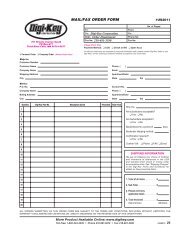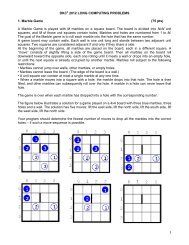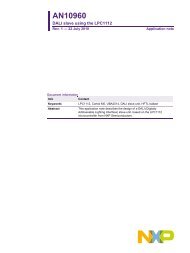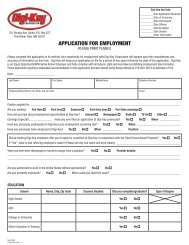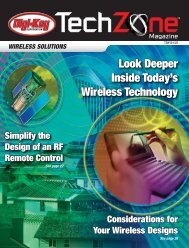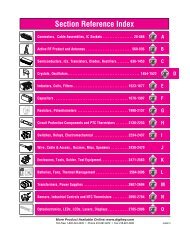Microcontroller Solutions TechZone Magazine, April 2011 - Digikey
Microcontroller Solutions TechZone Magazine, April 2011 - Digikey
Microcontroller Solutions TechZone Magazine, April 2011 - Digikey
You also want an ePaper? Increase the reach of your titles
YUMPU automatically turns print PDFs into web optimized ePapers that Google loves.
Analog interference<br />
Mixing analog and digital circuits on the same board has its own<br />
challenges. Board layout and routing become important in order<br />
to keep the analog noise levels at a low level in order to ensure<br />
accurate sampling of low-level analog signals. Doing a good<br />
mixed-signal design requires careful hardware considerations and<br />
skills. Software design can also affect the quality of the analog<br />
measurements. Performing a lot of I/O activity at the same time<br />
as sampling analog signals will cause many digital lines to toggle<br />
state at the same time – a candidate for introducing extra noise<br />
into the A/D converter.<br />
Power debugging will help to identify interference from digital and<br />
power supply lines affecting the analog parts. Interrupt activity<br />
can easily be displayed in the Timeline window together with<br />
power data. Be sure to study the power graph right before the A/D<br />
converter interrupts. Power spikes in the vicinity of A/D conversions<br />
could be the source of noise and must be investigated. All data<br />
presented in the timeline window is correlated to the executed<br />
code; simply double-clicking on a suspicious power sample will<br />
bring up the corresponding C source code.<br />
Conclusion<br />
Power debugging techniques provide embedded developers the<br />
ability to understand the effect of source code on their application’s<br />
power consumption. By careful analysis of power “hot spots” and<br />
the review of programming methods used, engineers can make<br />
signifi cant battery lifetime savings even during the early stages of<br />
project development.<br />
Figure 4: Power spike due to stepper motor interfering with A/D-sampling.<br />
We’re changing how engineers think about<br />
design using Cortex-M0 solutions with:<br />
Lowest active power – as low as 130 μA/MHz<br />
Superior Code Density – 50% less code for most tasks<br />
Higher performance – LPC1100 runs at over 45 DMIPS<br />
Smallest size – the LPC1102 has a footprint of 5 mm 2<br />
Low-cost toolchain – LPCXpresso for less than $30<br />
Cortex-M0: a simple choice<br />
www.digikey.ca/nxp-mcu<br />
60



